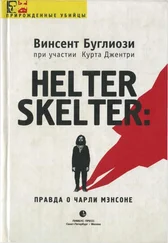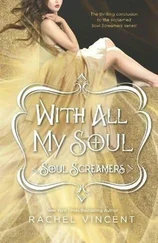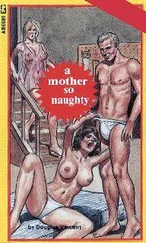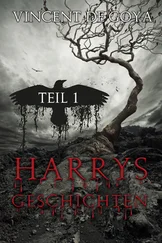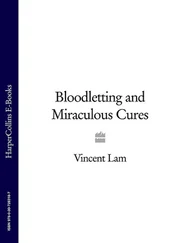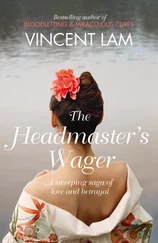At 6:01 A.M. on February 9, 1971, a monster earthquake shook most of Southern California. Measuring 6.5 on the Richter scale, it claimed sixty-five lives and caused millions of dollars’ worth of damage.
I awoke thinking the Family was trying to break into our house.
The jurors awoke to find water cascading on them from broken pipes above their rooms.
The girls on the corner told reporters Charlie had caused the quake.
Despite the disaster, court resumed at the usual time that morning, with Susan Atkins taking the stand to trigger an earthquake of her own.
Daye Shinn’s first question of his client was: “Susan, were you personally involved in the Tate and LaBianca homicides?”
Susan, who was wearing a dark jumper and a white blouse, and looking very little-girlish, calmly replied, “Yes.”
Although by this time all counsel knew that the three girls intended to take the stand and “confess,” Fitzgerald having mentioned it in chambers nearly a week before, the jury and spectators were stunned. They looked at each other as if disbelieving what they had heard.
Shinn then took Susan through her background: her early religious years (“I sang in the church choir”); the death of her mother from cancer (“I couldn’t understand why she died, and it hurt me”); her loss of faith; her problems with her father (“My father kept telling me, ‘You’re going downhill,’ so I just went downhill”); her experiences as a topless dancer in San Francisco; her explanation for why she was carrying a gun when arrested in Oregon (“I was afraid of snakes”); and her introduction to drugs, Haight-Ashbury, and her first fateful meeting with Charles Manson.
Returning to the crimes, she testified: “This whole thing started when I killed Gary Hinman, because he was going to hurt my love…”
Judge Older called the noon recess. Before leaving the stand, Susan turned toward me and said, “Look at it, Mr. Bugliosi. Your whole thing, man, is just gone, your whole motive. It is so silly. So dumb.”
That afternoon, Sadie recited the newly revised version of how the Hinman murder went down. According to Susan, when Manson arrived at the Hinman residence, to persuade Gary to sign over the pink slip on a car they had already purchased, Gary drew a gun on him. As Manson fled, Gary tried to shoot him in the back. “I had no choice. He was going to hurt my love. I had my knife on me and I ran at him and I killed him…Bobby was taken to jail for something that I did.”
The holes in her story were a mile wide. I noted them for my cross-examination.
After the arrest of Beausoleil, Susan testified, Linda proposed committing copycat murders. “…and she told me to get a knife and a change of clothes…she said these people in Beverly Hills had burned her for $1,000 for some new drug, MDA…”
Before leaving Spahn Ranch, Susan said, “Linda gave me some LSD, and she gave Tex some STP…Linda issued all the directions that night…No one told Charlie where we were going or what we were going to do…Linda had been there before, so she knew where to go…Tex went crazy, shot Parent…Linda went inside the house…Linda gave me her knife.” At this point in her narrative, Daye Shinn opened the blade of the Buck knife and started to hand the knife to Susan.
THE COURT“Put that knife back the way it was!”
SHINN“I only wanted to get the dimensions, Your Honor.”
Susan skipped ahead in her narrative. She was holding Sharon Tate and “Tex came back and he looked at her and he said, ‘Kill her.’ And I killed her…And I just stabbed her and she fell, and I stabbed her again. I don’t know how many times I stabbed her…” Sharon begged for the life of her baby, and “I told her, ‘Shut up. I don’t want to hear it.’”
Though Susan’s words were horrifyingly chilling, her expression for the most part remained simple, even childlike.
There was only one way to describe the contrast: it was incredibly obscene.
In discussing the Hinman murder, Susan had placed Leslie Van Houten at the murder scene. There had never been any evidence whatsoever that Leslie was involved in the Hinman murder.
In discussing the night the LaBiancas were killed, Susan made some additional changes in the cast of characters. Manson didn’t go along, she said. Linda drove; Tex creepy-crawled the LaBianca residence; Linda instructed Tex, Katie, and Leslie what to do; Linda suggested killing the actor in Venice. And when they returned to Spahn Ranch, “Charlie was there sleeping.”
Just as improbable was another of her fictional embellishments. She had implicated Manson in her conversation with me and in her testimony before the grand jury, she claimed, because I had promised her that if she did so I would personally see that none of the defendants, including Manson, would receive the death penalty.
The best refutation of this was that she had implicated Manson on the tape she made with Caballero, days before our first meeting.
Describing that meeting, Sadie said, “Bugliosi walked in. I think he was dressed similar to the way he is dressed now, gray suit, vest.”
Q.“This was way back in 1969, right?”
A.“Right. He looked a lot younger then.”
We’d all gone through a lot in the last fourteen months.
Shinn then began questioning Susan about Shorty! I asked to approach the bench.
BUGLIOSI“Your Honor, I can’t believe what is going on here. He is talking about Shorty Shea now!” Turning to Daye, I said, “You are hurting yourself if you bring in other murders, and you are hurting the co-defendants.” Older agreed and cautioned Shinn to be extremely careful.
I was worried that if Shinn continued, the case might be reversed on appeal. What conceivable rationale could there be for having your client take the stand and confess to a murder with which she isn’t even charged?
Fitzgerald took over the direct. He asked Susan why the Tate victims were killed.
A.“Because I believed it was right to get my brother out of jail. And I still believe it was right.”
Q.“Miss Atkins, were any of these people killed as a result of any personal hate or animosity that you had toward them?”
A.“No.”
Q.“Did you have any feeling toward them at all, any emotional feeling toward any of these people—Sharon Tate, Voytek Frykowski, Abigail Folger, Jay Sebring, Steven Parent?”
A.“I didn’t know any of them. How could I have felt any emotion without knowing them?”
Fitzgerald asked Susan if she considered these mercy killings.
A.“No. As a matter of fact, I believe I told Sharon Tate I didn’t have any mercy for her.”
Susan went on to explain that she knew what she was doing “was right when I was doing it.” She knew this because, when you do the right thing, “it feels good.”
Q.“How could it be right to kill somebody?”
A.“How could it not be right when it is done with love?”
Q.“Did you ever feel any remorse?”
A.“Remorse? For doing what was right to me?”
Q.“Did you ever feel sorry?”
A.“Sorry for doing what was right to me? I have no guilt in me.”
Fitzgerald looked beaten. By bringing out her total lack of remorse, he had made it impossible for the defense to persuasively argue that she was capable of rehabilitation.
We had reached a strange situation. Suddenly, in the penalty phase, long after the jury had found the four defendants guilty, I was in a sense having to prove Manson’s guilt all over again.
Читать дальше

